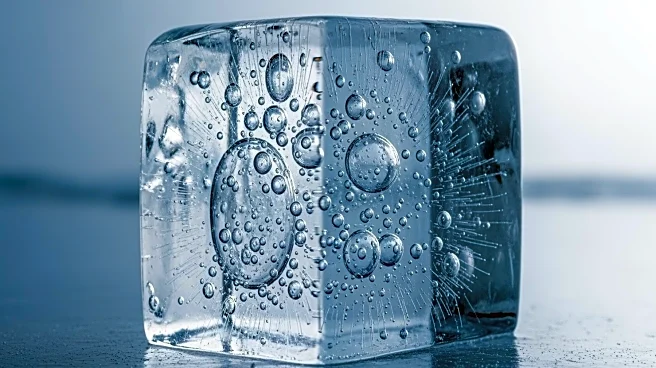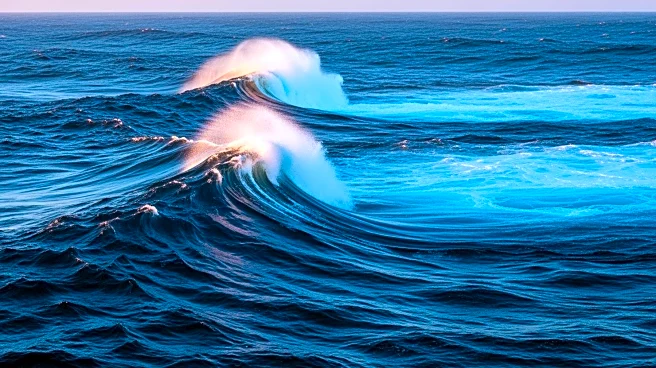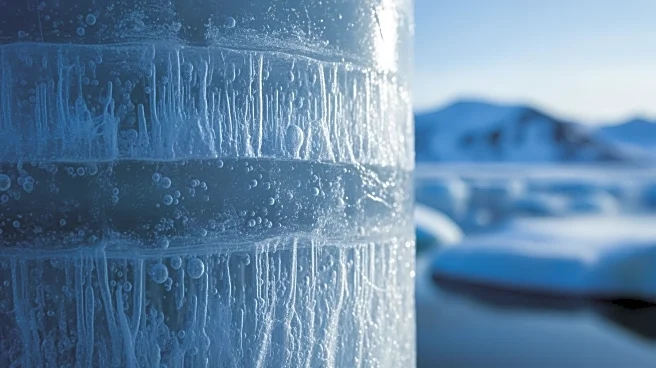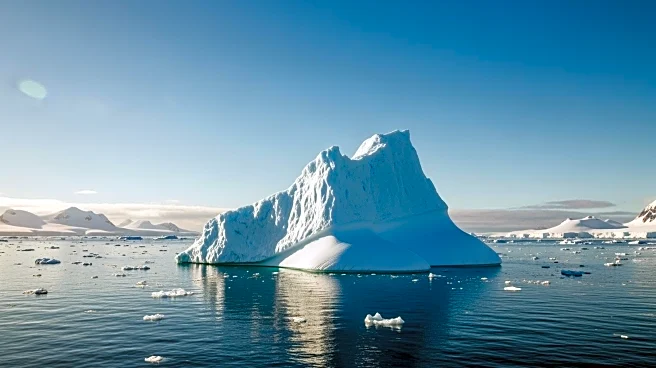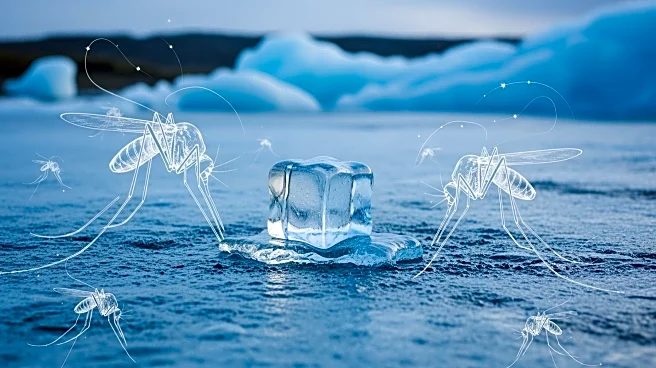What's Happening?
Scientists have identified unique life forms thriving beneath the Arctic sea ice, challenging previous assumptions about nitrogen fixation in cold environments. Nitrogen-fixing microbes, historically believed to exist only in warm tropical waters, have been
found under the sea ice in the Arctic Ocean. These microbes, known as non-cyanobacterial diazotrophs (NCDs), possess the genetic capability to fix nitrogen, although their active role in nitrogen fixation in the Arctic has yet to be confirmed. The discovery suggests that these microbes could play a significant role in the region's nitrogen cycle, potentially influencing the marine food web and atmospheric conditions.
Why It's Important?
The presence of nitrogen-fixing microbes under Arctic ice could have profound implications for global climate models. As Arctic ice melts due to climate change, the proliferation of these microbes may alter the marine ecosystem by supporting increased algae growth. This could enhance the food web, affecting species from plankton to fish, and potentially increase the Arctic Ocean's capacity to absorb carbon dioxide. Incorporating these findings into climate models is crucial, as they may influence predictions about the region's ecological and atmospheric changes.
What's Next?
Researchers advocate for the inclusion of Arctic nitrogen fixers in future climate models to better understand their impact on nitrogen fixation dynamics. As Arctic ice continues to melt, the potential increase in nitrogen-fixing activity could significantly alter marine ecosystems and atmospheric conditions. Further studies are needed to confirm the extent of nitrogen fixation by these microbes and to assess their broader ecological impact.
Beyond the Headlines
The discovery of nitrogen-fixing microbes in the Arctic challenges existing scientific paradigms and highlights the complexity of biological systems. Understanding these microbes' role in the nitrogen cycle could lead to new insights into ecological interactions and climate processes, emphasizing the need for comprehensive research in polar regions.
